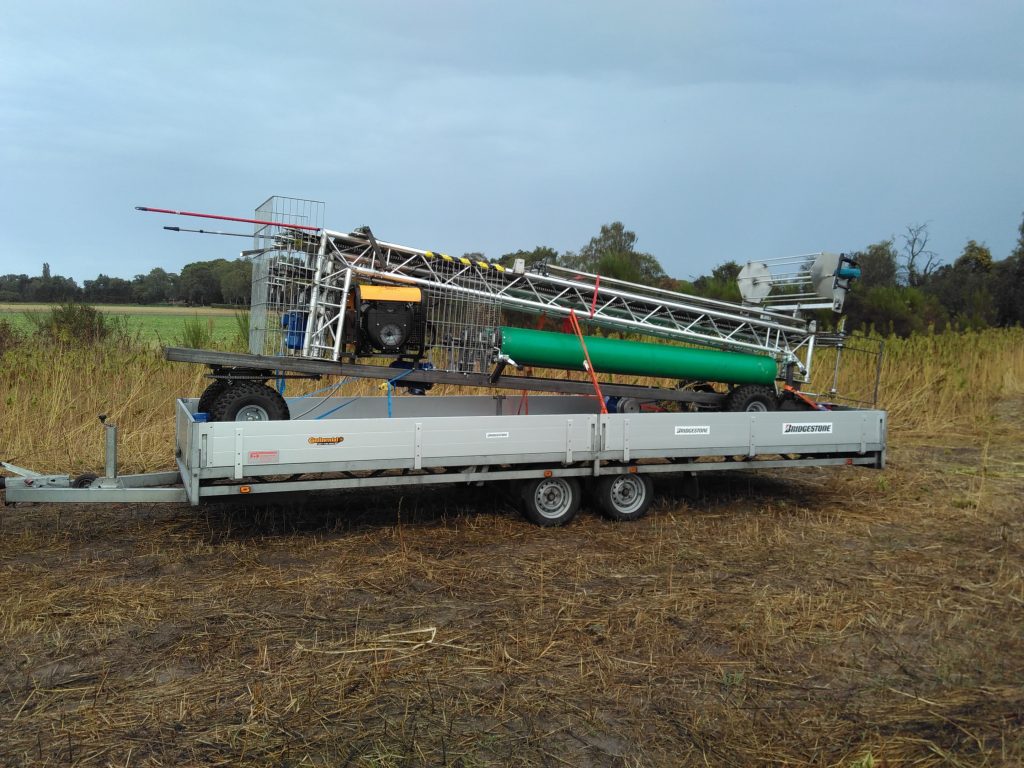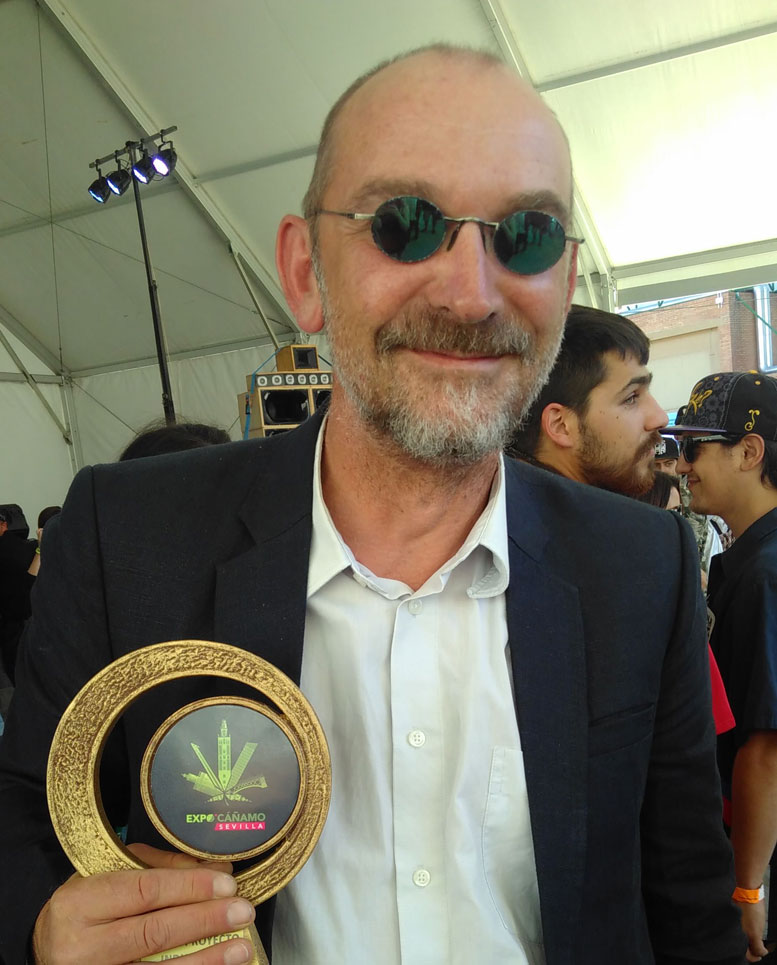
Beginnings
When I went to Mexico 2015 for the job I also had some holidays which I spent in Tulum. Just entering the road from village to beach; I picked up Hana, with two friends. She told me about her business and really, I was infected. We kept contact and I visited her hemp harvest in 2015. All the rest came like an avalanche: I saw the need for machinery, I wanted to quit my job in pharma-chemicals and I wanted to get into hemp.
Milestones

Year 1: 2016 – Development of a prototype self-propelled harvester. Proof of concept for the patented system of rollers and chains for the stripping process.
Year 2: 2017 – Work concentrated on the cutting and stripping units to make them smaller and more compact while switching from the self-propelled concept to a small tractor to drive the process. Drives changed from electrical to hydraulic motors.

The idea of an affordable stripper was proven when we stripped buds in a barn in Poland in late October (2017). We then conducted intense trials with the stripper in Spain, Germany, Czech Republic and Poland. It worked so well just feeding the machine with hemp and collecting the buds, that we decided to create an electrical, stationary stripping machine using parts from the first field harvester prototype. Autumn brought very promising trials with the harvester, and we knew we were close to a complete harvesting solution.

Year 3: 2018 – HHH bud stripping technology won the Innovation Award for Best Industrial Project at Seville-based Expocáñamo, the Spanish cannabis industry event May. (https://hemptoday.net/bud-stripper-honored/)
Year 4: 2019 – Field trials prove the full functionality of the components. The major problem has always been to get the hemp-stems into the stripping gap and to find the right position for the cutting bar. Both challenges are now perfectly solved and the stems can fall freely for retting in the field.
Trials in Switzerland: We tried to separate and strip the individual shoots of an entire plant using a stainless steel comb. Due to the very different stem diameters, this idea did not work. It was better, but the resilience of the chain guide reached its limits.
